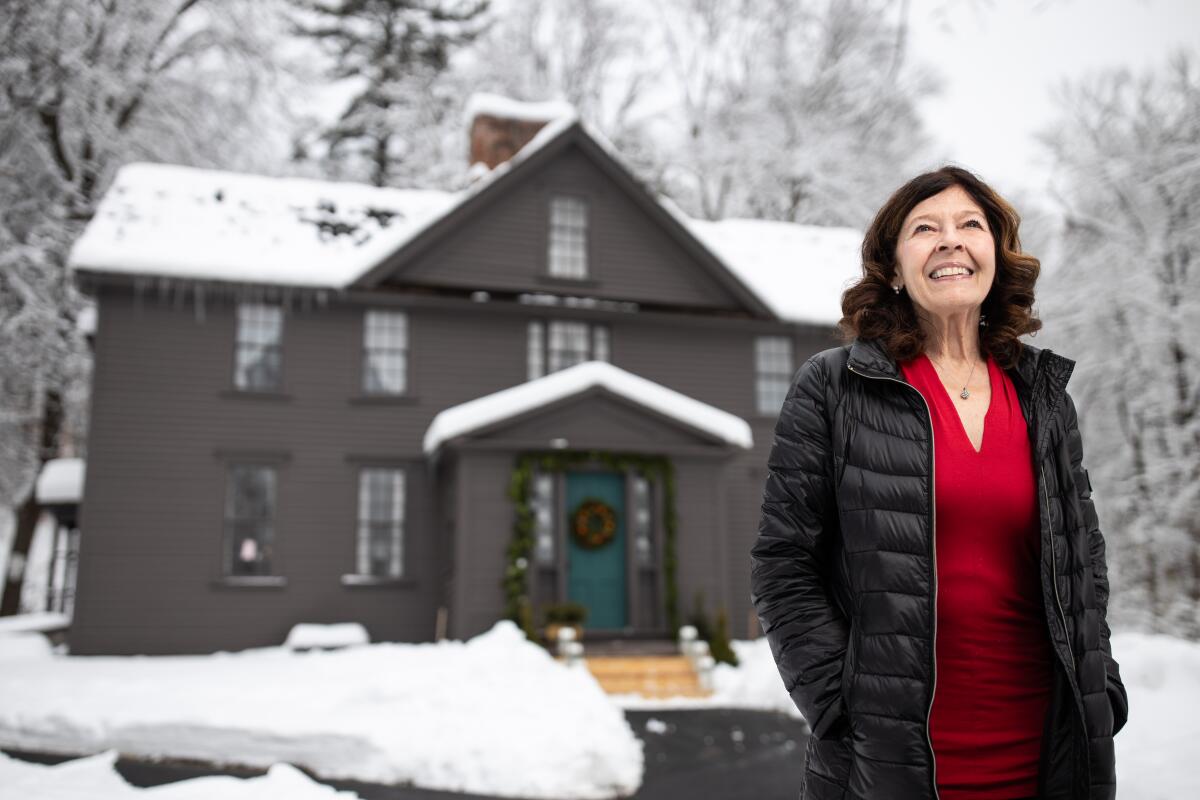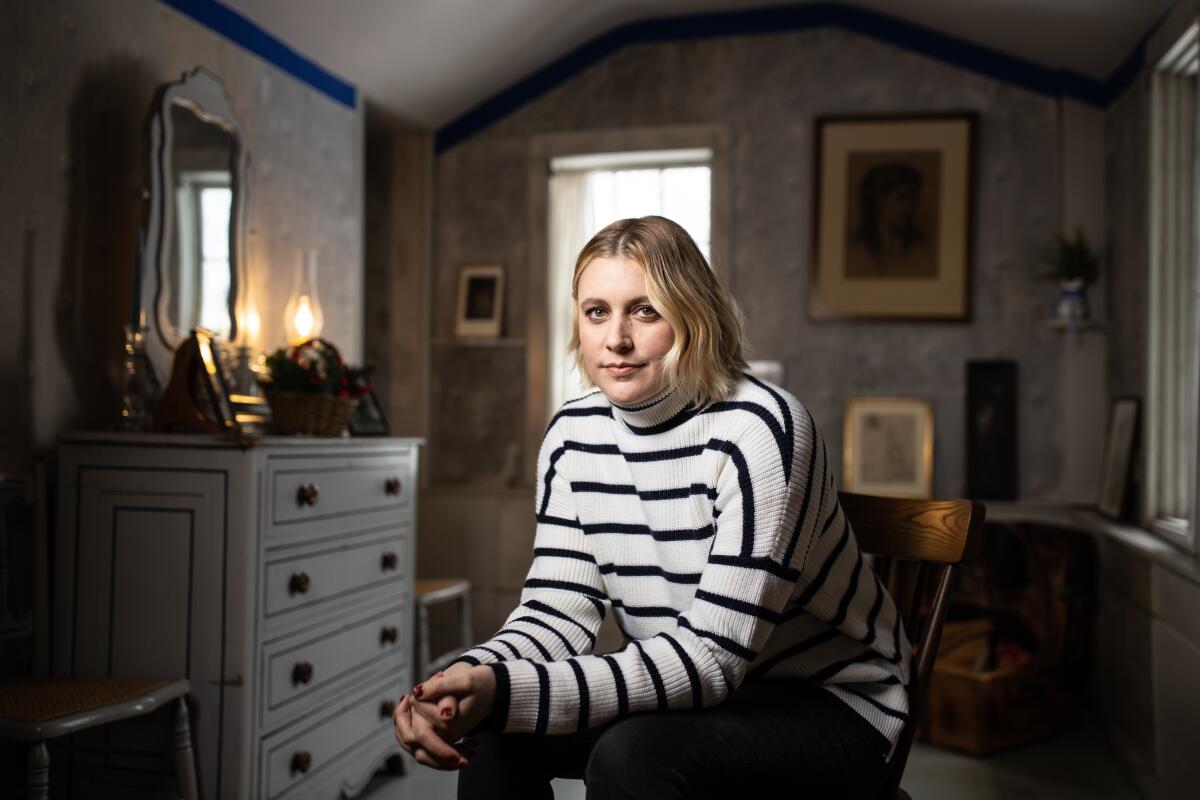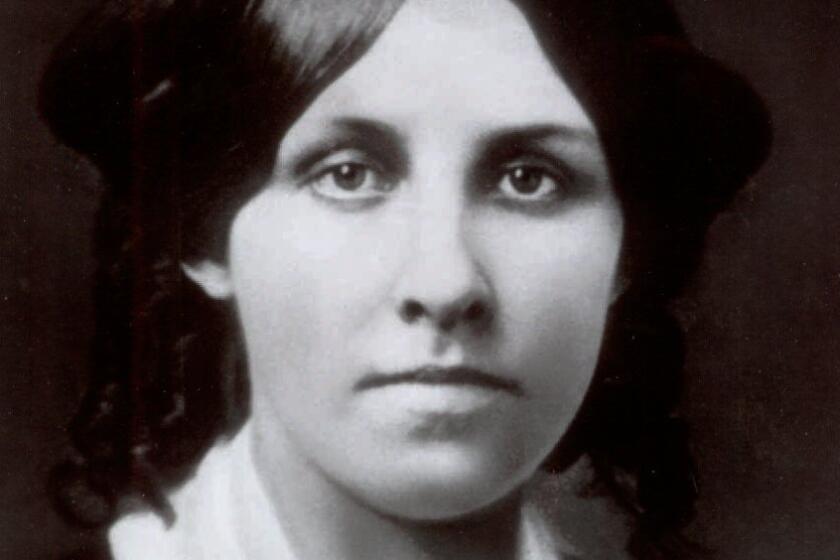At the Massachusetts home that inspired ‘Little Women,’ admission is up threefold

- Share via
Jan Turnquist knew that things would change after “Little Women” came out. So before the Christmas release of Greta Gerwig’s film, she got Orchard House in order.
She hired and trained new tour guides to lead guests around the Concord, Mass., home where Louisa May Alcott wrote her seminal novel in 1868. She ordered tons of copies of the updated version of the book, filled with pictures from the movie. She even came up with a system to handle the influx of tourists, stationing a guide in each room instead of assigning a docent to every group.
And her initiatives have proven vital: Visitation at Orchard House is up threefold compared with previous winters.
Turnquist, who has served as the museum’s executive director for just over two decades, is well acquainted with the impact a “Little Women” movie can have on the home. In 1994, when she was still working as a tour guide, she saw how many fresh faces turned up following the release of the Gillian Armstrong adaptation starring Winona Ryder and Susan Sarandon.
“This is somewhat similar to what happened in 1994,” said Turnquist. “Ballets or plays or PBS productions of the book — all of those do affect people’s interest, but not as powerfully as a major motion picture. And that’s part of why we spent some time beta testing ways to make things work a little smoother. When guests come in, if they’re greeted with joy, any wait is much more manageable and even pleasant.”
Gerwig’s “Little Women,” which was nominated for six Oscars including best picture, was not, in fact, shot at Orchard House. But unlike with previous incarnations of Alcott’s story, the filmmaker took pains to make the movie in Concord, using the natural landscapes that inspired the author and her contemporaries, Henry David Thoreau and Ralph Waldo Emerson. Production designer Jess Gonchor spent hours going through the 19th century home so that his team could construct its own version of the American Colonial structure two miles down the road on a 50-acre piece of land.
“A lot of guests coming through think the movie was all filmed in Orchard House because the exterior looks so perfect,” Turnquist said of the replica, which was torn down after filming wrapped. “But then we have to explain that there are airplanes going over this house, there’s traffic on the street, and so many delicate original items. I don’t know how we would have managed it with all the artifacts.”

Alcott’s father, Amos Bronson Alcott, bought the 12 acres of land where Orchard House now sits for $945 in 1857. At the time, the family home was a run-down manor house that had been on the property since the 1660s — a building “essentially thrown into the deal for free because it was in such horrible condition,” Turnquist said. The family patriarch ultimately conjoined the home with a smaller tenant farmhouse and named it Orchard House, after the 40 apple trees on the land. He lived there with his wife and daughters until 1877.
Because there’s so much emphasis on how poor the March family is in “Little Women,” some visitors are surprised by how large the Alcott residence seems, Turnquist said. But much of that has to do with the fact that Louisa May Alcott herself put the profits from “Little Women” back into the house — giving it fresh paint and wallpaper and replacing the floor mats with carpeting.
But one of the most popular stops on the home tour is one of its more modest features: the tiny desk at which Alcott wrote “Little Women.”
“There is often surprise from folks who can’t get over what Louisa could do with such a small space,” said Turnquist, adding that Alcott’s father built the desk for her. “I tell people that in that era, it was considered improper for a woman to have a desk of her own. Women could write letters — that’s just fine — but serious writing was not encouraged. Some physicians even wrote papers saying brain work destroyed women’s health. So for her to have a desk of any size was a thrill for Louisa and gave her wonderful encouragement.”
Turnquist noted that visitors also are excited to see drawings on the wall done by Abigail May Alcott, who inspired the character of Amy in “Little Women.” Some are taken aback by the level of talent the young artist displayed, since her character in the book is so full of self-doubt about her paintings.
About 50 people can walk through Orchard House at one time, and most spend around 45 minutes inside. Adult admission is $12.50, which Turnquist said the museum only recently raised from $10 after “so many people told us it was on the low side.”
But because the home is a National Historic Landmark, it survives on public funding. And while ticket sales may be up, Turnquist said she has yet to see an increase in donations to the museum.
“Often, people need to be asked — they don’t just donate. So we may see that more as we send out our appeal letters,” she said.
After serving as a museum since 1912, the home went through its biggest upgrade to date in 2000. Turnquist had become concerned about the stability of the museum, which had “basically become like a saggy cardboard box.” So Orchard House underwent a two-year structural renovation, during which the building was raised onto steel and a new foundation was laid.
Should she raise enough money, Turnquist said, she’d like to preserve the artwork on the walls in better fashion. She’d also consider putting a climate-controlled vault into the building the museum owns next door, “where items that need attention would have a place to be stored and restored.”
Still, Turnquist said she has been invigorated by the “whole fresh chapter” that has followed the release of Gerwig’s film. She has been working at Orchard House since 1977, when she was in her 20s, and has since become so attached to Louisa May Alcott that she plays her in living-history programs.
“I don’t see myself here when I’m 150,” she said with a laugh. “But this increased visitation is only a positive, because the real people are even more interesting and powerful than the stories about them. Visitors come in so excited about the movie, and it’s been a wonderful atmosphere. I said to my staff the other day: ‘It’s like a festival in here.’ People are in such a good mood that they don’t even seem to mind waiting.”
Part of “Little Women’s” popularity stems from its semiautobiographical nature, but Louisa May Alcott was far more revolutionary and fascinating than even the beloved Jo March.
More to Read
Only good movies
Get the Indie Focus newsletter, Mark Olsen's weekly guide to the world of cinema.
You may occasionally receive promotional content from the Los Angeles Times.












